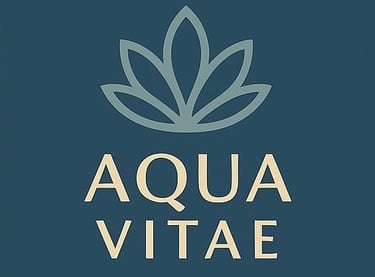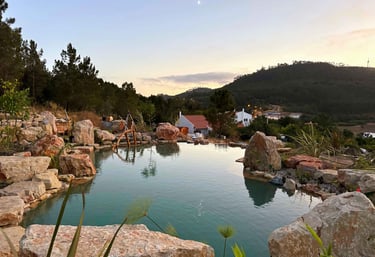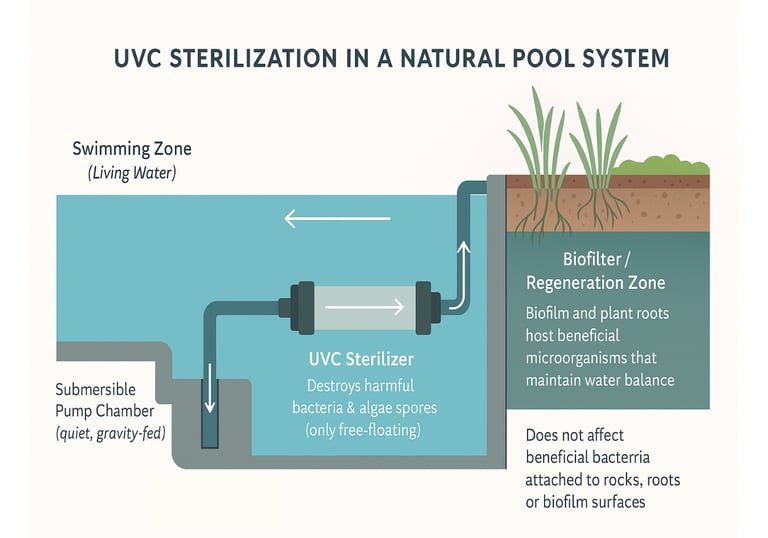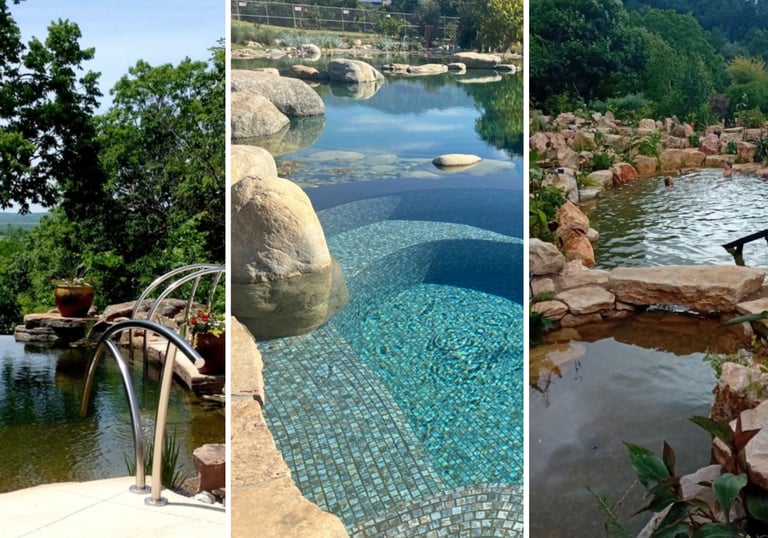Natural Pools vs Chlorine Pools vs Salt Pools | Aqua Vitae Guide
Discover how natural swimming pools compare to traditional chlorine and saltwater systems — in health, maintenance, and long-term beauty.
8/18/20253 min read
Natural Pools vs Chlorine Pools vs Salt Pools
What’s the Difference Between Natural, Saltwater & Chlorine Pools
If you’re planning to build or renovate a pool, the conversation has evolved beyond the old debate of
chlorine vs. saltwater.
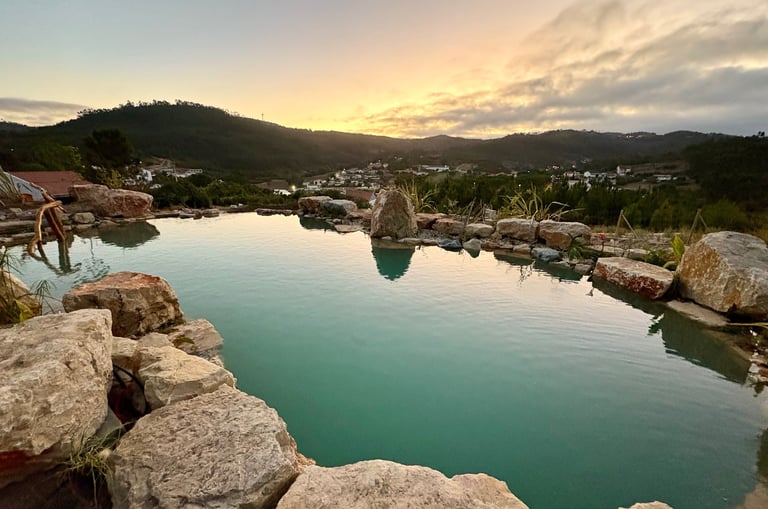

Instead of chlorine or salt, these pools use plant-based filtration zones, gravel beds, and UV-C sterilization to purify the water — just like a healthy ecosystem. Thanks to recent advances in eco-filtration technology, natural pools now offer crystal-clear, living water that’s both rejuvenating and safe for swimming. The result is a vibrant aquatic environment that supports life, feels incredible on the skin, and stays clean year-round — without synthetic chemicals.

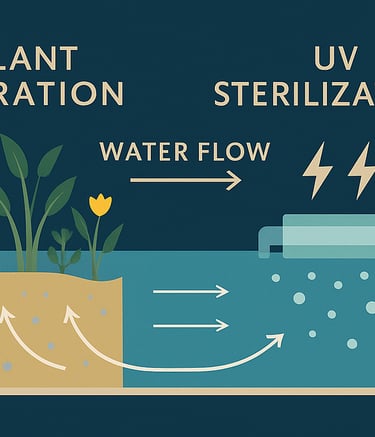
Chlorine Pools
Chlorine pools disinfect water chemically. While they’re common and effective, they come with a number of well-documented drawbacks:
Respiratory irritation – Chlorine fumes can aggravate asthma and sensitive lungs.
Skin & eye irritation – Dryness, redness, and rashes are common side effects.
Hair damage – Chlorine strips natural oils.
Health risks – Disinfection by-products (THMs) have been linked to long-term health concerns. For families, this raises understandable worries. For hotels and wellness centers, harsh chemicals can affect guest comfort and detract from a brand’s sustainable image.

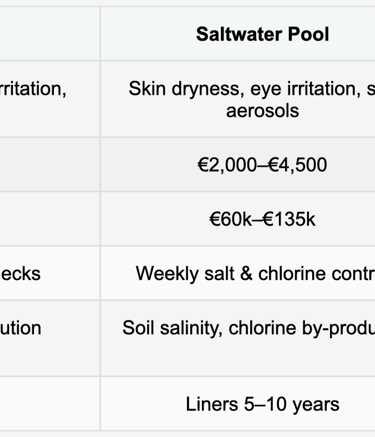
Across Europe and the U.S., natural pools are redefining outdoor living and hospitality design. They offer safe, chemical-free water, lower lifetime costs, and effortless maintenance — all while supporting nature, not fighting against it.
If you’re ready to explore what’s possible, we’d love to help.
👉 Contact Aqua Vitae Biopools to discuss your vision. Our team will guide you through the process and help design a pool that fits your lifestyle, your property, and the planet.

The Future of Swimming
Today, more and more homeowners, architects, and hospitality professionals are exploring a third — and far more sustainable — option: the natural swimming pool.
What is a Natural Swimming Pool?
A Natural Swimming Pool (NSP), (also called an organic pool, swimming pond or biopool)
is a chemical-free pool system that mimics the way nature keeps lakes clean.
Comparison
Saltwater pools are often promoted as a “natural” alternative, but in truth, they still generate chlorine through electrolysis. That means many of the same issues remain — plus a few additional ones:
Skin dryness & eye irritation
Respiratory discomfort from salt aerosols
Environmental concerns from salt runoff affecting soil and gardens
Higher corrosion risk for nearby metal structures. For homeowners and hospitality operators alike, that means higher maintenance and repair costs over time.
Saltwater Pools
Natural Swimming Pools (Biopools)
Natural pools take an entirely different approach. Instead of chemicals, they use aquatic plants, biological filters, and UV-C sterilization to keep water crystal clear and naturally balanced.
Benefits include:
Healthier water – safe for children, pets, and sensitive swimmers.
Longevity – liners last 30–50 years or more.
Lower running costs – minimal maintenance and no chemicals to buy.
Design flexibility – from contemporary to naturalistic styles.
Guest appeal – a unique, eco-luxury feature that draws wellness travelers.
Health Comparison
Chlorine and saltwater pools both expose swimmers to chemical by-products that can irritate skin and lungs. Natural pools, by contrast, provide living water — clean, oxygen-rich, and chemical-free — ideal for daily use at home or in wellness-focused hospitality environments.
Comparison Chart
You may also like...
The Era of Chemical Pools Is Over | Aqua Vitae
Discover how natural swimming pools use plants and UV sterilization to deliver crystal-clear, chemical-free water for healthy, sustainable living.
UV Sterilization for Natural Swimming Pools | Aqua Vitae
Learn how UV-C sterilization for natural swimming pools can ensure year round chemical-free, crystal-clear water that’s safe, clean & eco-friendly; naturally.
Explore styles and various features for creating your dream natural pool, pond or water‑feature. From design inspiration to filtration, plants and aesthetic detail.
Design Your Dream Natural Pool – Styles & Features | Aqua Vitae
Experience the future of swimming with natural pools.
© 2025 Aqua Vitae. All rights reserved.
